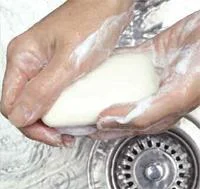ICU Management & Practice, ICU Volume 11 - Issue 4 - Winter 2011/2012
The Society for Healthcare Epidemiology of America shared that a new report studying hand hygiene of healthcare workers in the emergency department found certain care situations, including bed location and type of healthcare worker performing care, resulted in poorer hand hygiene practice. The study was reported in the November issue of Infection Control and Hospital Epidemiology, the journal of the Society for Healthcare Epidemiology of America.
"We found that receiving care in a hallway bed was the strongest predictor of your healthcare providers not washing their hands," said Dr. Arjun Venkatesh, an emergency medicine resident at Brigham and Women's hospital in Boston, and author of the study. Dr. Venkatesh believes this finding will focus attention on infectious risks that are created by the national trend of emergency department crowding.
The study, which is the largest to date to evaluate hand hygiene in an emergency department, confirmed many known contributors of poor hand washing practices. For example, the researchers observed providers wearing gloves during patient care instead of washing their hands, an inappropriate substitution for infection control purposes. The study also found that workers who transport patients between hospital departments and rooms were less likely to wash their hands compared to other healthcare workers. This may be because these workers receive less training in hand hygiene procedures than other workers.
The researchers collected data on over 5,800 patient encounters in the emergency department. Overall, appropriate hand washing practices were used 90 percent of the time. The authors hope the study will lay the foundation for future research and quality improvements in understanding the role of the emergency department in healthcare associated infections.






